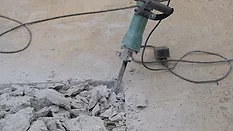

Green Plumbing and Mechanical
Image courtesy of: imantsu (iStock / Getty Images Plus)
Your resource for green plumbing and heating news and trends.
Articles
More ArticlesPodcasts
More PodcastsBlog Posts
Keep your content unclogged with our newsletters!
Stay in the know on the latest plumbing & piping industry trends.
JOIN TODAY!Copyright ©2025. All Rights Reserved BNP Media.
Design, CMS, Hosting & Web Development :: ePublishing





